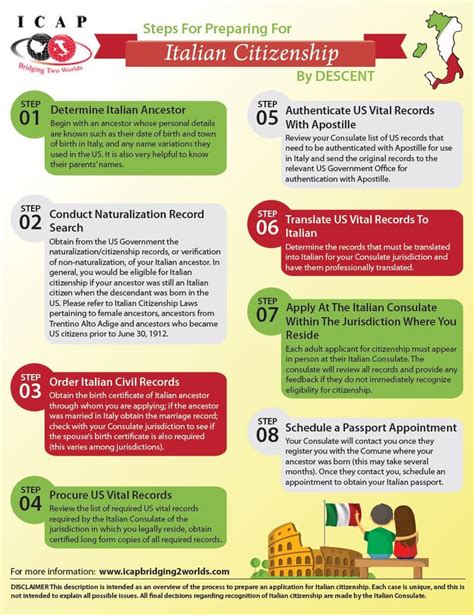Italy Awaits: Your US Citizen's Step-by-Step Guide to Visiting the Bel Paese
Italy. The very word conjures images of sun-drenched coastlines, ancient ruins whispering stories of empires past, and delectable cuisine that tantalizes the taste buds. For US citizens, experiencing the Bel Paese (beautiful country) is a dream within reach, but proper planning ensures a smooth and enjoyable trip. This guide provides a step-by-step walkthrough, addressing common questions and concerns to make your Italian adventure unforgettable.
What Documents Do I Need to Enter Italy as a US Citizen?
This is the first and arguably most crucial step. US citizens generally need a valid passport, valid for at least three months beyond your intended stay in Italy. While a visa is not required for tourist stays of less than 90 days within a 180-day period under the Schengen Agreement, ensuring your passport is up-to-date is paramount. Confirm its validity well in advance of your travel dates to avoid any last-minute setbacks. It's also advisable to make copies of your passport and keep them separate from the original – a crucial precaution against loss or theft.
Do I need a visa for Italy if I'm a US citizen?
No, you do not need a visa for tourist visits to Italy lasting less than 90 days within a 180-day period. However, this is only valid for tourism and certain other short-term purposes. For longer stays, work, or study, you will require a visa. Always check the latest regulations on the official website of the Italian embassy or consulate in your area.
What Should I Pack for My Trip to Italy?
Packing for Italy depends greatly on the time of year and the regions you plan to visit. Italy experiences diverse climates, from the sunny Mediterranean coast to the cooler alpine regions. Always check the weather forecast before you leave. Comfortable walking shoes are a must, as you’ll likely be doing a lot of exploring on foot. Remember to pack lightweight and versatile clothing, layers for fluctuating temperatures, and any necessary medications. Consider a small, adaptable backpack for day trips.
What kind of clothes should I pack for Italy?
Pack versatile clothing items that can be mixed and matched. Comfortable walking shoes are a necessity. Remember to consider the time of year and the regions you plan to visit, as Italy has varied climates.
What's the Best Way to Get Around Italy?
Italy offers various transportation options. High-speed trains (Frecciarossa, Frecciargento, Frecciabianca) connect major cities efficiently. Regional trains are more affordable but slower. Buses are a budget-friendly alternative, particularly for exploring smaller towns and villages. Renting a car offers greater flexibility, especially if you plan to venture beyond the main tourist areas, but be aware of potential parking challenges in city centers.
Is it better to rent a car or use public transport in Italy?
This depends on your itinerary. Public transport is efficient for major cities and between them. A car offers more freedom to explore less accessible areas but parking can be difficult and expensive in cities.
What are the Must-See Places in Italy?
Italy boasts a wealth of iconic destinations. Rome's ancient wonders, including the Colosseum and Roman Forum, are a must-see. Florence, the birthplace of the Renaissance, captivates with its art and architecture. Venice, with its canals and gondolas, offers a unique experience. Positano’s picturesque cliffside houses and the Amalfi Coast's stunning scenery are equally captivating. The list goes on! Prioritize based on your interests and the duration of your trip.
What are some less touristy places to visit in Italy?
Consider exploring regions like Umbria, Puglia, or Basilicata for a more off-the-beaten-path experience. These regions offer stunning landscapes, charming towns, and delicious food without the overwhelming crowds of major tourist destinations.
What's the Currency in Italy?
The Euro (€) is Italy’s currency. Inform your bank and credit card companies of your travel dates to avoid any issues with using your cards abroad. Consider carrying some cash for smaller purchases and tipping. ATMs are readily available in most cities and towns.
Is it Safe to Travel to Italy as a US Citizen?
Italy is generally a safe country for tourists. However, as with any travel destination, it's wise to practice common sense precautions, such as being aware of your surroundings, avoiding walking alone at night in poorly lit areas, and keeping valuables secure.
By following these steps, you can confidently plan your Italian adventure. Remember to research specific locations, book accommodations and transportation in advance, and immerse yourself in the rich culture and beauty of this captivating country. Buon viaggio! (Have a good trip!)

